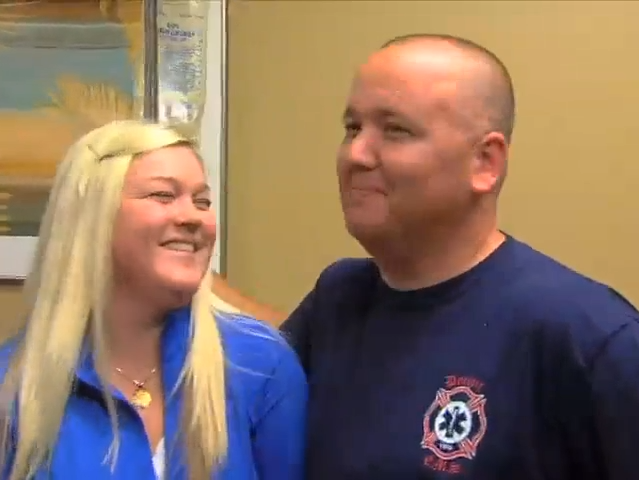Joseph Hardman, Paramedic, Suffers Heart Attack While Administering CPR To Heart Attack Victim

Detroit paramedic Joseph Hardman, 40, said he felt an explosion in his chest before going to the hospital and receiving treatment for a heart attack. It was good timing, too, as Hardman had just administered cardiopulmonary resuscitation (CPR) to another heart attack victim moments before and was in an ambulance already bound for the hospital.
“I’d have to say one in a million is about appropriate,” said Detroit Medical Center’s Dr. Michael Brown of the incident’s likelihood of occurrence. “I haven’t seen it and I haven’t heard of it.”
Both Hardman and the victim he was treating, who asked to remain unidentified, received stents for their two clogged arteries. Hardman’s blockage was particularly alarming because of its location. Known as the “widow maker” artery, the left main coronary artery is notorious for extreme constriction, thus producing more fatal heart attacks.
Blockage in the widow maker artery is caused by a rush of platelets to the site of ruptured cholesterol plaque. Experts need to work quickly in treating a widow maker heart attack, as the window of survival time can range from several minutes to a few hours.
“If I hadn’t been in the position I was in, I would have been deceased,” the 15-year paramedic told Detroit's WXYZ-TV Monday.
Hardman’s recovery could take a few months, doctors say, at which point he would be cleared to return to work. He had no history of heart conditions prior to the attack.
While advances have no doubt been made in heart attack treatment, little progress has been made in the last 30 years in raising the survival rate, according to one University of Michigan study. According to the study, only 7.6 percent of people survive out-of-hospital heart attacks, even after receiving in-house treatment. Hardman said that he was thankful he was already in a position to go to the hospital and receive treatment expediently.
“I can only say it’s a miracle,” said Joe Barney, Hardman’s friend and union president, “and that man’s a hero.”
Published by Medicaldaily.com



























